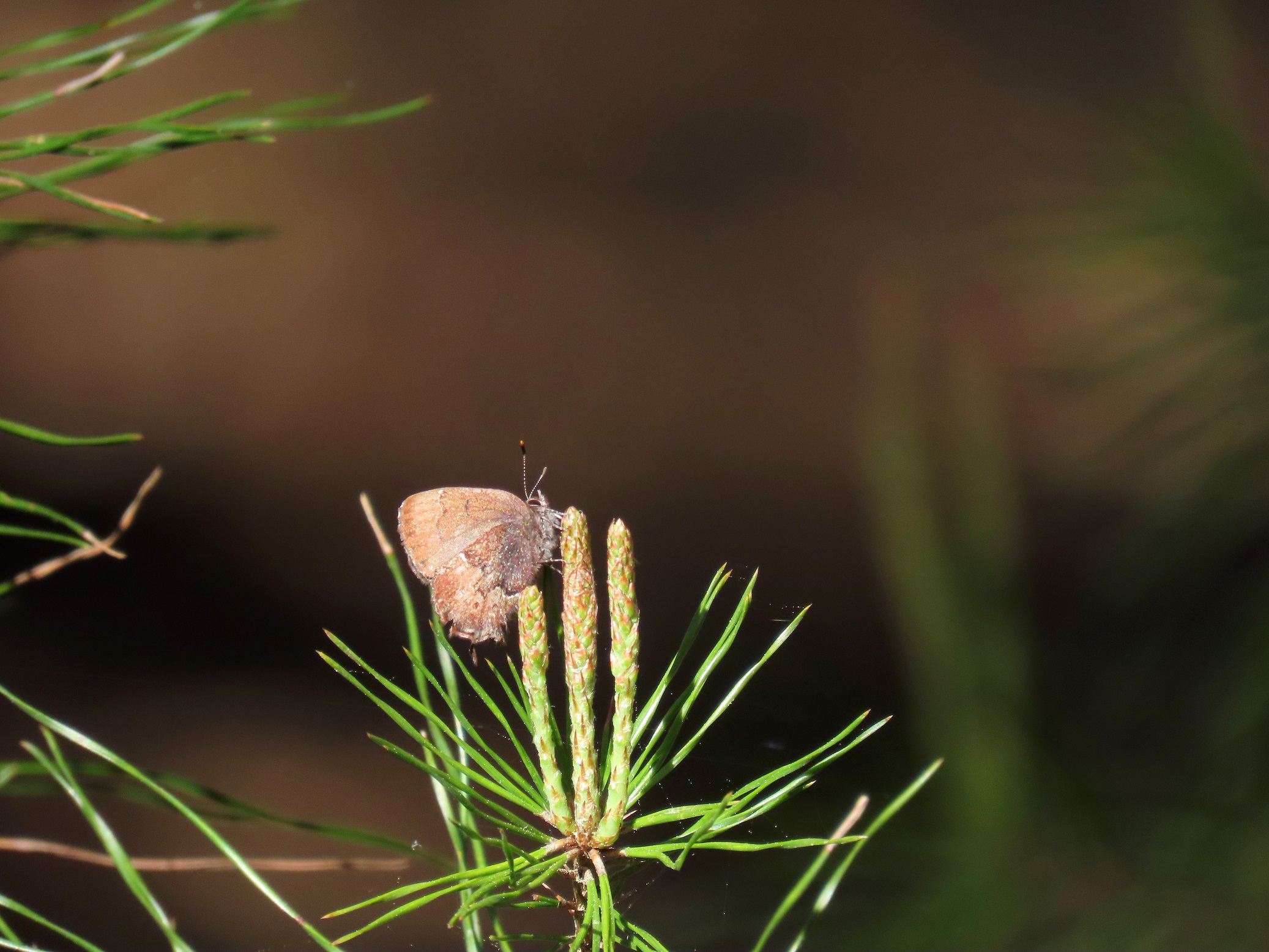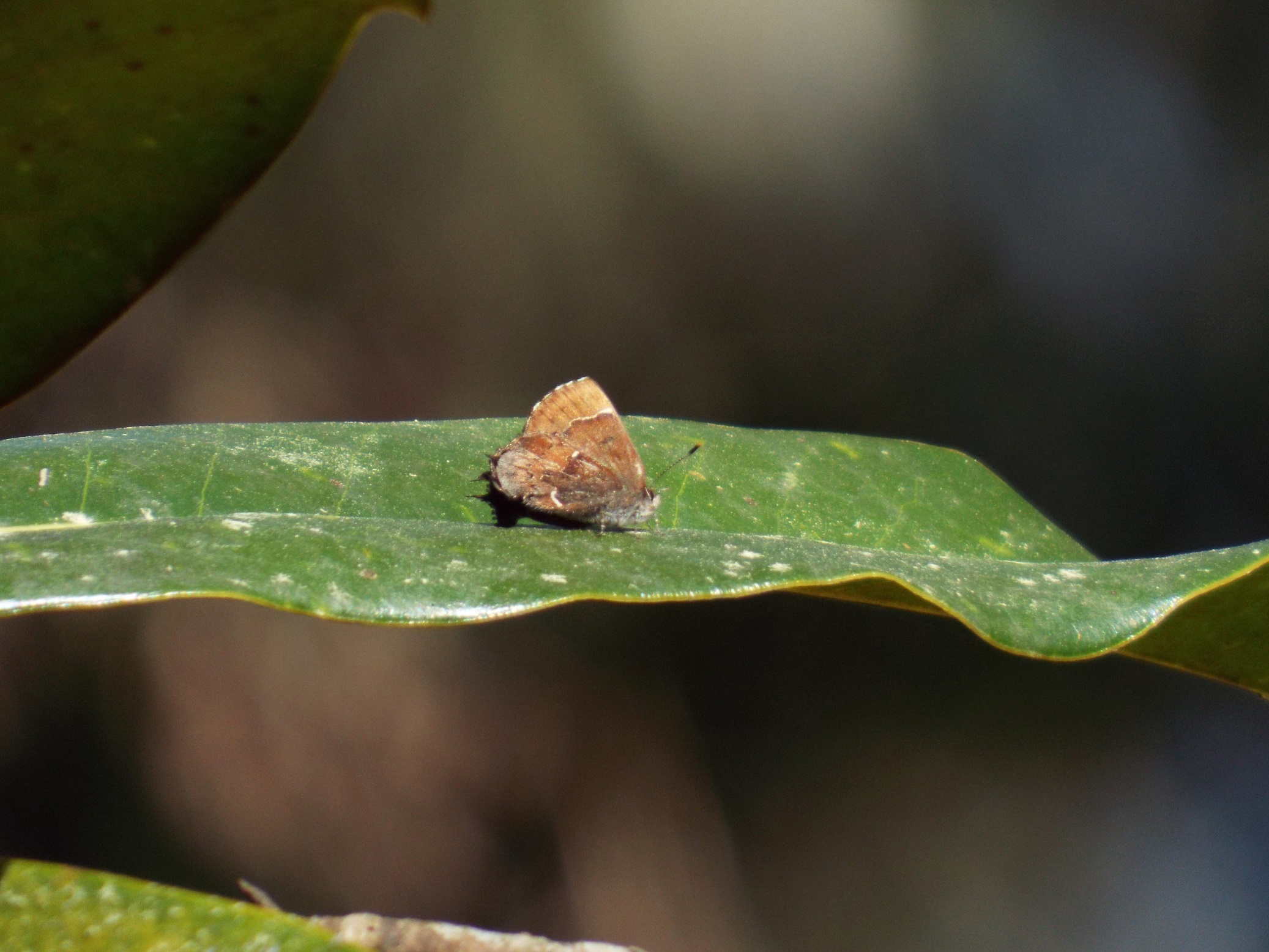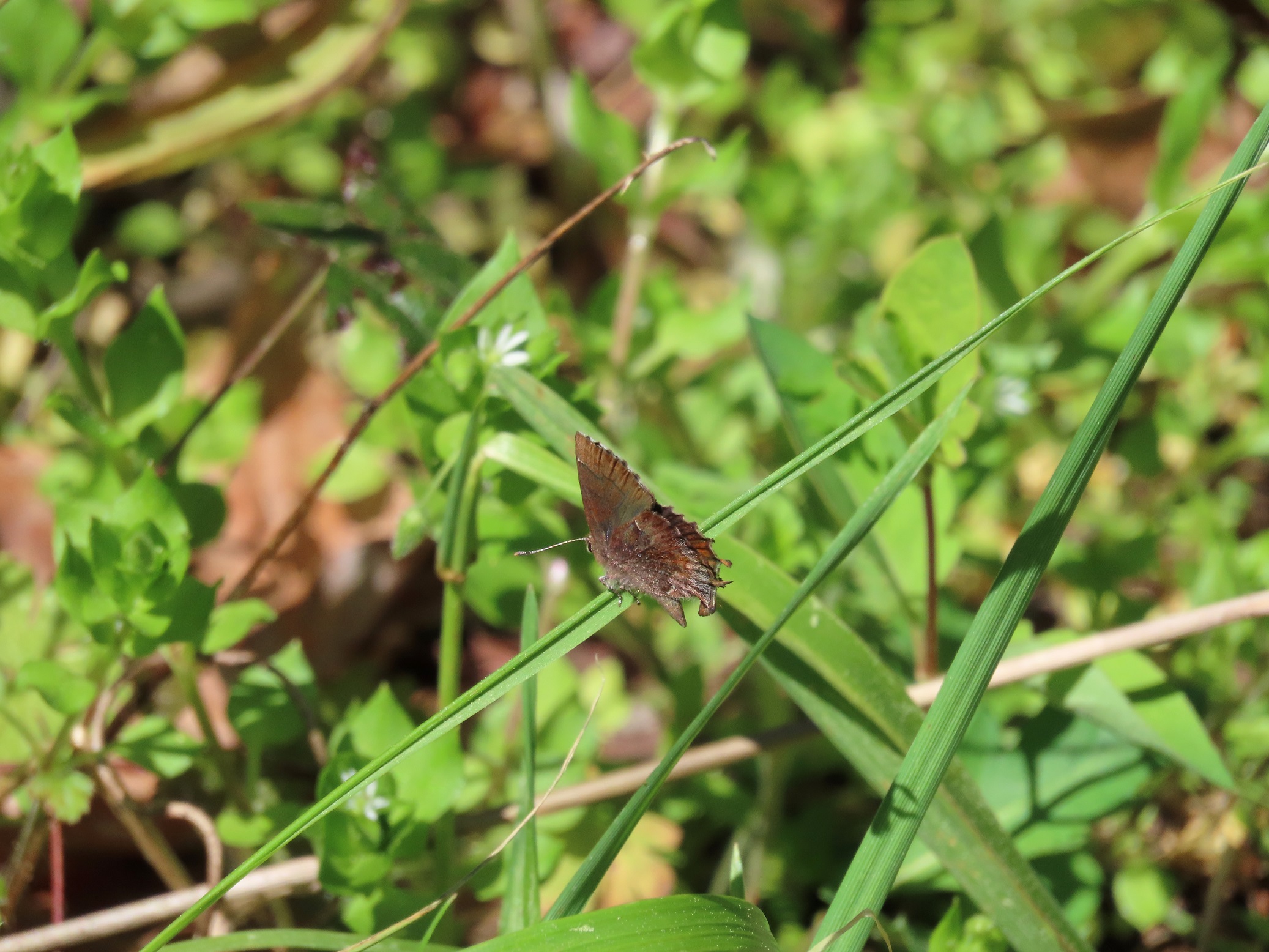




This week for Flora and Fauna Friday it’s one of our earliest butterflies of the year, an oft hard to find hardwood flutter-by, the Henry’s Elfin (Callophrys henrici).
We have six species of Elfin here in South Carolina: Henry’s Elfin (C. henrici), Juniper Hairstreak (C. gryneus), Eastern Pine Elfin (C. niphon), Frosted Elfin (C. irus), Brown Elfin (C. augustinus), and Hessel’s Hairstreak (C. hesseli). The Henry’s Elfin is our most common and widespread Elfin here in the Lowcountry and our focus for today. Yet, the Juniper Hairstreak is fairly common on the Sea Islands, although much more scarce. The Pine Elfin is also here but very seldom seen. The Frosted Elfin is a rare and endangered species specialized to wiregrass savannas. Brown Elfins and Hessel’s Hairstreaks are found only upstate.
Elfins are butterflies in the Gossamer-Wing family, Lycaenidae, a diverse clade of small, close winged butterflies. This family is best known in the United States for holding the Hairstreaks and Azures, both groups are often a pale gray below but blazoned above with a brilliance of iridescent blue. Elfins share a lot of similar physical characteristics to their Hairstreak cousins. However, our six Elfins are set apart by a more sedentary nature, cryptic coloration of primarily brown with hints of green, and a slightly larger size on average, at a half-inch to three-quarters-of-an-inch tall. The Juniper and Hessel’s Hairstreaks stand apart from the other Elfins, and all our Gossamer-Wings, with their wings gilded brilliantly in iridescent emerald.
The Henry’s Elfin can most easily be separated from the other Elfins by examining its hindwing, which sports a fairly distinct postmedian line, that’s the line on the outer half of the wing. In Henry’s Elfins, this line flaunts a white highlight at both the top and bottom ends. The Brown Elfin never has that bottom highlight and is generally evenly colored across both wings. However, the Frosted Elfin can have double-sided white on the postmedian line. To eliminate the Frosted Elfin, look for an isolated black dot on the hindwing, just inside from the tails that trail from the lower tip of the wing, as well as extensive frosting on the hindwing bleeding up onto the forewing. The postmedian line on the forewing of the Henry’s Elfin also tends to be straighter and flatter than the Frosted Elfin, which normally steps up and down between cells. As for the Pine Elfin, that’s a horse of a different color! Not really, it’s also brown, but its checkerboard patterned hindwing is hard to mistake for anything but an Eastern Pine Elfin!
Despite the monotonous color palette, the Henry’s Elfin is still a handsome butterfly, especially when fresh. A deep mahogany along the abdomen sparkles with pinpricks of white and the faintest iridescent wash of indigo as it smoothly transitions up into warm chestnut above and heavy walnut tones below, until we hit the postmedian lines. There a dividing line splits the wings and both turn pale. The forewing a pallid khaki wash. The hindwing frosted on its lower margin and beset betwixt with a row of dark spots. Below, our bug is stained an ash-gray with antennae and legs ringed in strikingly contrasted black and white. Like I said, a handsome butterfly!
The Henry’s Elfin is most readily found in deciduous forests in early spring. They have one brood, which generally flies from the first week of March to the end of April. They are very wide ranging and cover an eclectic assemblage of habitats. This is a butterfly that can crop up anywhere and requires trial and error to find. But, to stack the odds in your favor, you can hone in on hostplants. Hollies are a favored hostplant of the Henry’s Elfin, particularly the widespread American Holly (Ilex opaca). Eastern Redbud (Cercis canadensis) is also a host alongside several other unrelated shrubs. American Holly and Eastern Redbud are both thin-skinned midstory trees that are best adapted to deciduous forests and areas of infrequent fire, like floodplain margins. Which are the ecosystems where I’ve personally seen the most Henry’s Elfins. Henry’s Elfins are also rather arboreal in nature and will partake in nectar when convenient. Thus, try looking up and surveying the flowers of early-spring flowering trees and shrubs to further improve your odds. Watch the flowers of trees like Sweetleaf (Symplocos tinctoria), Shadblow (Amelanchier spp.), Redbud, and Blueberry (Vaccinium spp.). With enough scanning of the treetops, you can spot a Henry’s lazing around sipping on nectar or fluttering from shrub-top to shrub-top.